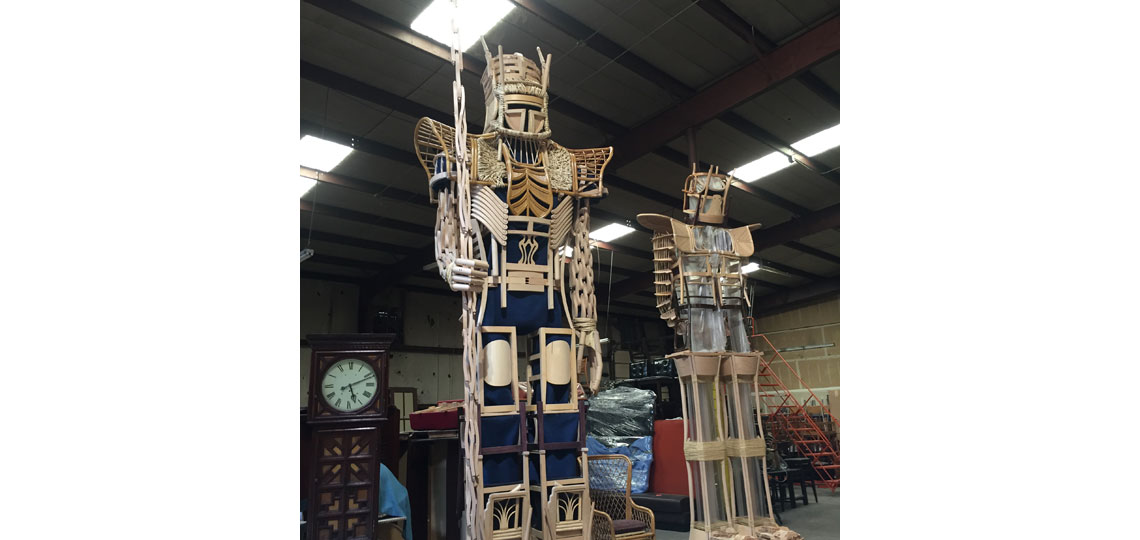In 1990 Steve Farland discovered a warehouse in which a local family-owned furniture manufacturer stored their overruns and spare chair parts. “I came into the warehouse with chairs stacked from floor to ceiling, and I remember thinking how much they looked like soldiers,” said Steve Farland about his initial idea to create monumental chair sculptures. “I realized that I had the space and the resources, and with artist Brian Sartor we could create an entirely new art form.”
Farland and Sartor created the installation Victory. You can see the sculptures and hear the artists talk about their work at this month’s Untitled Final Friday August 26 from 6–10 pm.
Farland supplied Sartor with chair parts from all over the world he had collected from manufacturers off-loading discontinued models and overstocks of unnecessary chair pieces.
“All of the chair pieces that I have are beautifully made, but they are all missing a component that would allow them to be a complete chair again,” said Farland, motioning to his rows and rows of warehouse shelving filled to the brim with wooden crates. “But now they can become something else.”

Part of the Victory installation by Steve Farland and Brian Sartor. The chair sculptures range in height from 16 feet tall to 20 feet tall.
When the two began working together, they combined Farland’s expertise in the architecture of chairs with Sartor’s visual art background to experiment with ways to stack chairs to give them realistic human form.
“Brian was incredible at getting the scale of these pieces,” said Farland. “Chairs have standard heights…Brian was able to use these measurements to create something that was proportionate to a human, so that when you look up at the sculptures, they feel lifelike.”
Each of the sculptures, which took roughly six months to build, looks almost like it is adorned in intricate samurai armor. Four of the sculptures are standing tall, giving the impression that they are guardians surveying the space. One is kneeling, reaching out to the outstretched hand of another that appears to be broken and strewn about the floor. The seventh is erupting triumphantly from a wooden create with hands outstretched toward the sky. While together they form the scene that is Farland’s Victory, individually they represent a human quality that Farland views as being a trait necessary to protect, nurture, mend, and liberate humankind.
“From the beginning I wanted to create peaceful warriors to signify standing up for those who cannot fight for themselves,” said Farland, who has been devoted to spreading awareness about elderly abuse since his mother-in-law Mary Stover (a World War II vet) was rescued from an abusive residence at age 94 (she's now 100). His passion for this cause would be the initial inspiration for the sculptures in Victory.
As the scene took shape and each new sculpture began to relate to the others, Victory came to represent not just a victory in the fight against elderly abuse, but a victory for all of the injustices in the world and the heroes who will help make this happen. As far as what the future holds for Victory, Farland and Sartor hope to travel with the installation as much as possible to exhibit their work and gather support for future projects.

